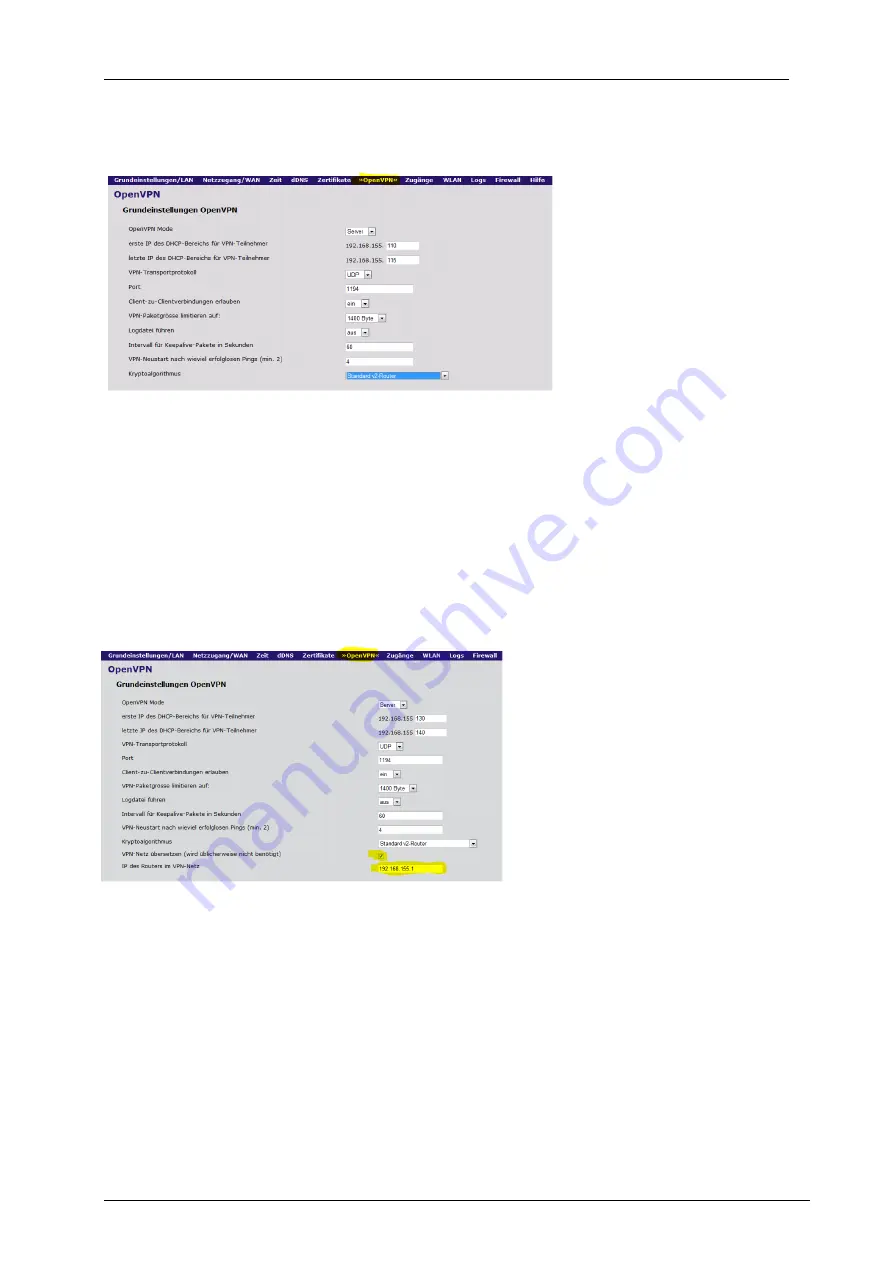
Brief description eurogard ServiceRouter V2
14/23
eurogard GmbH
Kaiserstraße 100
D-52134 Herzogenrath
T.: +49/2407/9516-0
F: +49/2407/9516-23
www.eurogard.de
Configuration of the Server mode
Verify that the addresses
for the DHCP in the VPN
do not overlap with the
LAN addresses.
The VPN port subsequently
used to access the server
is freely adjustable so that
several ServiceRouters can
be accessed in the target
network. Please ensure
that the port selected here
is forwarded to the WAN-IP of the ServiceRouter in the company network.
The pre-set values for: VPN protocol, packet size Keepalive and reboot should only
be altered after due consideration.
Settings Crypto-algorithm: For Clients of series V1 to be allowed to connect to this
Router, please choose
„Kompatibilitätsmodus für v1-Router“ (Compatibility with V1-
Router), in all other cases please select
„Standard v2-Router“.
Setting the Multi-NAT Function
The Router supports Multi-NAT.
Normally, the address range of
the VPN connection is to be
found in the same subnet as the
LAN area of the Router. Where
the VPN is to use a different
address range, please enter the
range in the VPN-DHCP fields.
This opens the bridge from the
VPN network to the LAN and the
Router converts all telegrams
from the VPN one-to-one into the
LAN address space. This applies
to incoming and outgoing telegrams (Multi or Twin-NAT)
Example:
In the example above the remote PLC network connected via VPN has the same
address range as the local network of the Client PC on the local side.
In order to enable the Client PC where, for example, programming software is
running, to determine which telegrams are to be sent to the local network and which
to the remote PLC via VPN tunnel, these have to belong to different sub networks.
The telegrams from the programming software have to be addressed to the subnet of
the VPN with NAT activated, so that they can be re-addressed by the local
ServiceRouter to the actual address of the PLC.









































